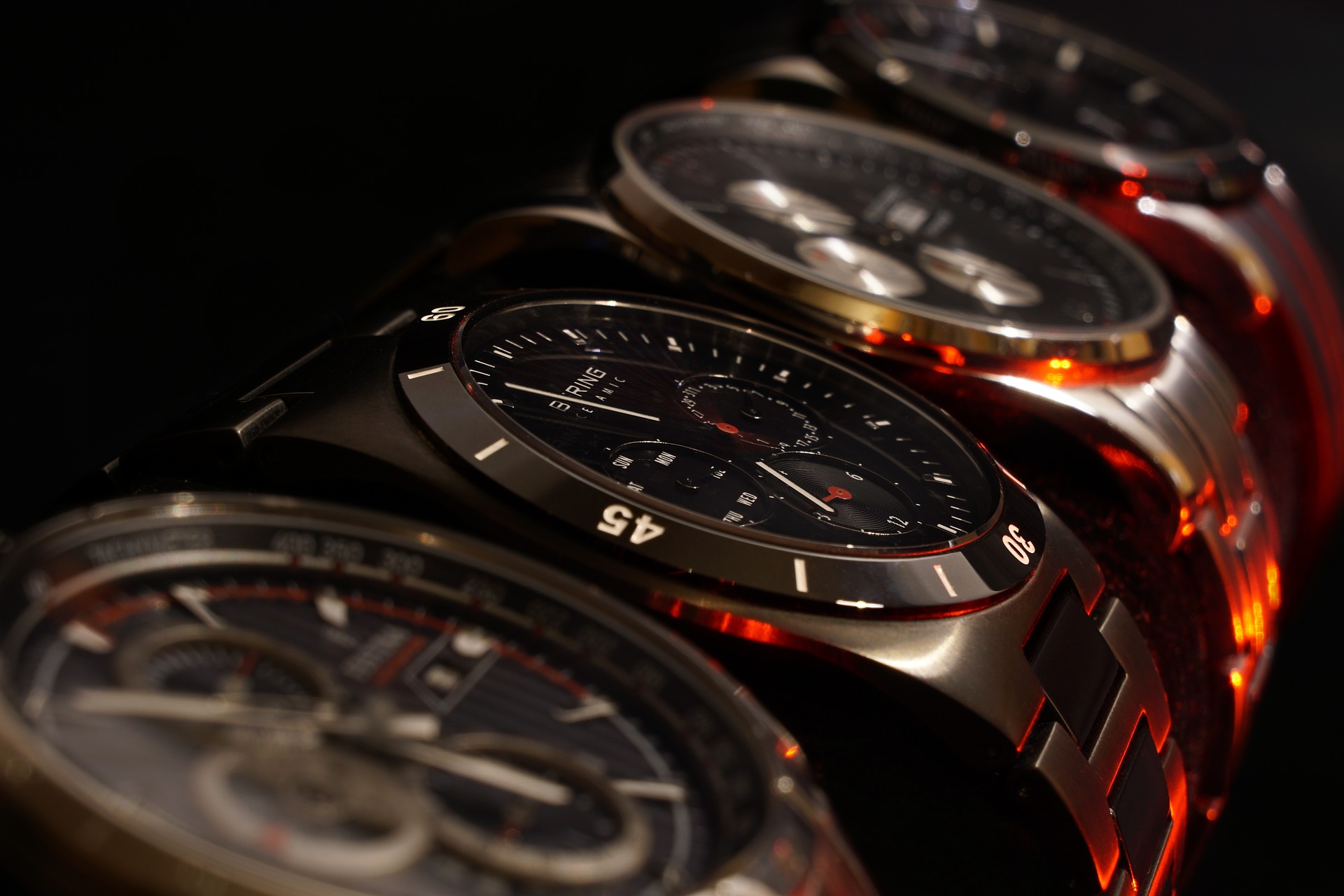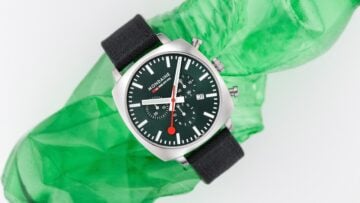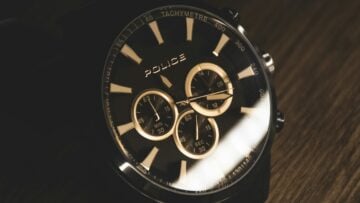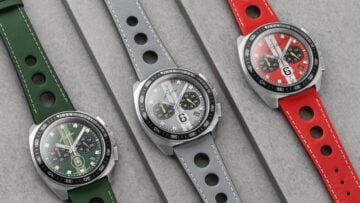The materials your watch is made of hold just as much importance as its mechanism or its design. Low-quality materials can mean a short lifespan for your watch or cost you a fortune in repairs in the long run. Previously we discussed the difference when it comes to the material of watch cases. The case stores the mechanism and undoubtedly is an integral part of the design of a timepiece. A wristwatch, however, is not complete without a strap or bracelet. Long gone are the days when everyone carried pocket watches. We can argue that the strap has become just as an essential part of any watch as the case. Choosing the right strap or bracelet material will mostly be determined by the comfort level the wearer’s looking for and the watch’s intended use. Below we have broken down the different bracelet and strap materials for watches to help you make an informed decision next time you purchase a watch.
Stainless Steel
Stainless steel is one of the most commonly used materials for watchmaking. Its composition makes it resistant to corrosion and staining, making it perfect for an accessory you wear daily. Stainless steel is also versatile when it comes to design. Incredibly low maintenance, durable and cost-effective, it’s obvious why this material is one of the top choices in the industry.
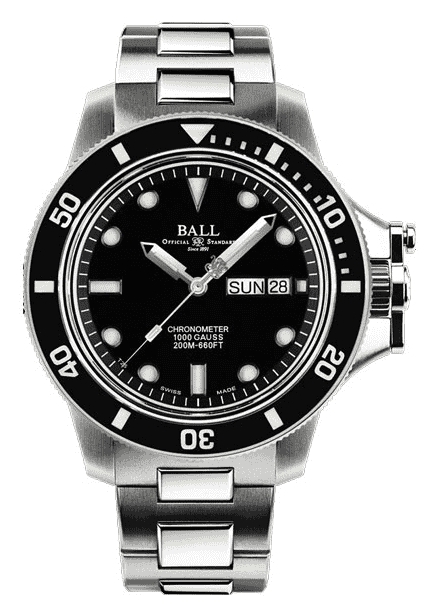
Ball Watch Company Men’s Engineer Hydrocarbon | Original | Automatic Stainless
An exquisite versatile timepiece by Ball Watch Company, the Engineer Hydrocarbon is created for those who like to challenge themselves and their surroundings. This model’s case and bracelet are made of stainless steel. Its silhouette is kept classic, making the watch perfect as an everyday piece. The design allows you to transition smoothly between the office and your active lifestyle. The watch’s ridged sapphire bezel matches the black dial. Thick luminescent hour markers and sword-shaped hands contrast the dial. The watch is water-resistant up to 200 metres, features a unidirectional bezel, a day and date displays and crown protection.
Leather
A traditional material, leather was the first material used to make wristwatches. Real leather is flexible and comfortable and can be highly durable with proper care. As you know, it is a material made from animal skins and hides. Leather is produced through a process called tanning in order to make the skin more durable and preserve it. Leather from different animals has different durability and texture. This is used when designing the watch to add a different look. A watch made of alligator leather would look entirely different from a worn leather watch.
For ethical reasons, people have started producing another type of material called artificial or synthetic leather. This material mimics the look and feel of genuine leather. It’s made of pulped paper, PVC or polyurethane. As it is a manufactured textile and not a natural material, faux leather is less costly than real leather. It however does not have the same durability.
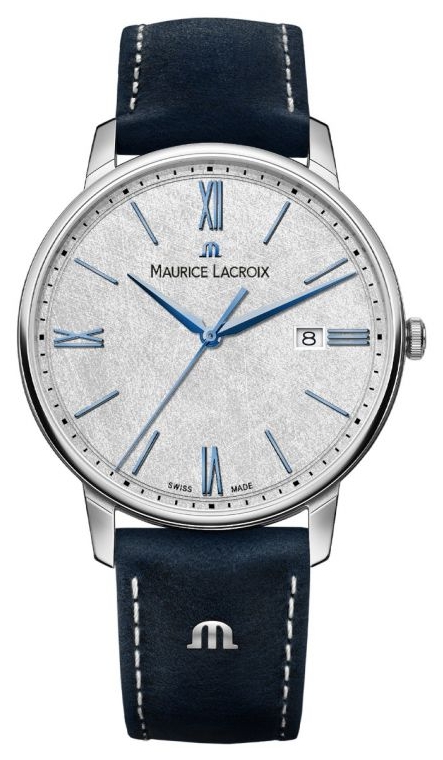
Maurice Lacroix Eliros collection | Leather Strap
A stunning timepiece by Maurice Lacroix. The watch is sophisticated and elegant. Its silver dial adds a luxurious touch to the design. The round shape of the stainless steel case gives the watch a more contemporary style. Its dial design is kept minimalist and clean. Blue steel pointed hands and a mix of indices and Roman numerals as hour markers set the tone for the overall look of the watch. The dial and the blue details give off an appearance reminiscent of ice. The strap is blue leather with white top-stitching.
Silicone and Rubber
Silicone and rubber are two other prevalent watch materials. They are durable, flexible and mostly used in modern diving or sports watches. Silicone is a polymer made up of siloxane. Silicone does not conduct heat well and is non-toxic making it perfect for sport’s watches. Its quality however, can degrade or even melt due to heat. Silicone has a much lower tensile strength than rubber and would be more prone to snapping.
Genuine rubber straps are more high-quality than their synthetic counterparts. It is a material derived from plants. Currently, rubber is harvested by making an incision into the tree and collecting the sap. The sap is then refined and turned into rubber. The material is highly resilient and waterproof. Both silicone rubber and genuine rubber are hypoallergenic.
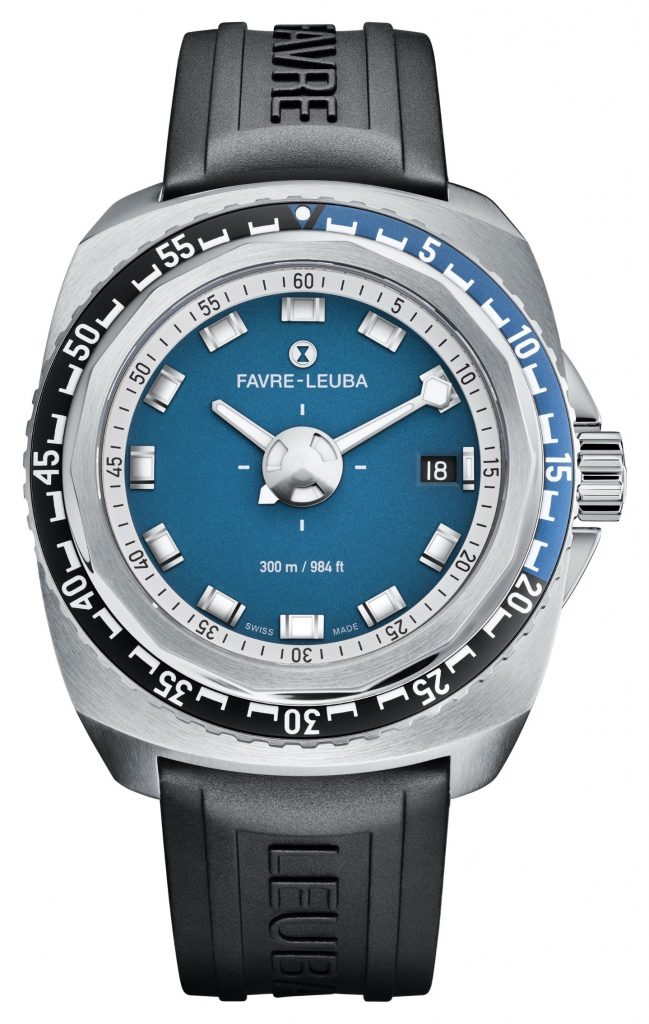
Favre Leuba Raider Deep Blue 41 | Black Rubber Strap | Blue Dial |
A diving watch to help you reach beyond your potential, this Favre-Leuba model is both highly functional and striking. Its pillow-shaped case is made of stainless steel and is one of the most characteristic features of the brand. The black strap is made of rubber and is stamped with the brand’s name. The watch is water-resistant up to 300 metres and has luminescent hour markers and hands. Other features on the model include a date aperture and a unidirectional bezel. The blue dial is protected by a dual-sided anti-reflective sapphire crystal.
Ceramic
Ceramic is a fairly new material in the watchmaking industry. Due to its properties, it was primarily used in medicine and by NASA. Ceramic is an inorganic material and does not contain any metals. This makes it hypoallergenic and extremely gentle to the skin. Depending on its composition it can be highly durable. It’s scratch-resistant and lightweight. When it comes to bracelet and strap materials fro watches these qualities are key and are what make ceramic a fantastic material.
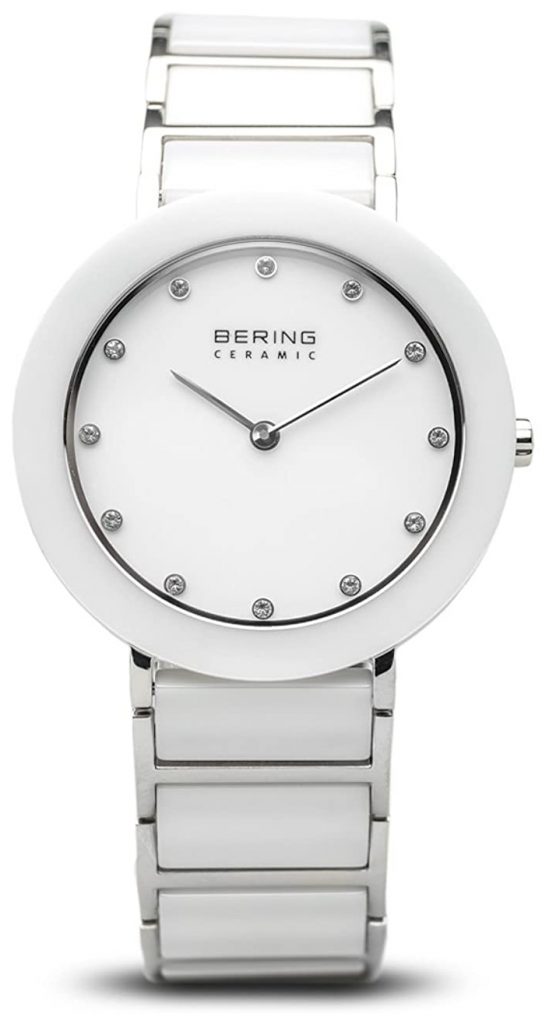
Bering Women’s Ceramic | White Ceramic Bracelet | White Dial
Inspired by the beauty of the Arctic, Bering has created this exquisite model. The design of the watch is highly minimalist and futuristic. Its case is made of polished stainless steel. The bracelet is a combination of white ceramic and stainless steel. A flat sapphire crystal protects the white dial. Swarovski crystals replace the indices. Thin silver-coloured hands and the Bering brand name are the only details contrasting the dial apart from the crystals. The ceramic bezel is wide, adding to the contemporary look of the watch.
Textile
Textile straps give a watch a more utilitarian and practical look. Depending on the fabric, the strap can have different properties. In watchmaking textile straps are primarily made of nylon or polyester. Nylon tends to be stronger and more durable than polyester. As they are textiles, these straps behave in similar ways to clothes fabrics. They are less durable than rubber or leather straps; however, they are a lot more flexible.
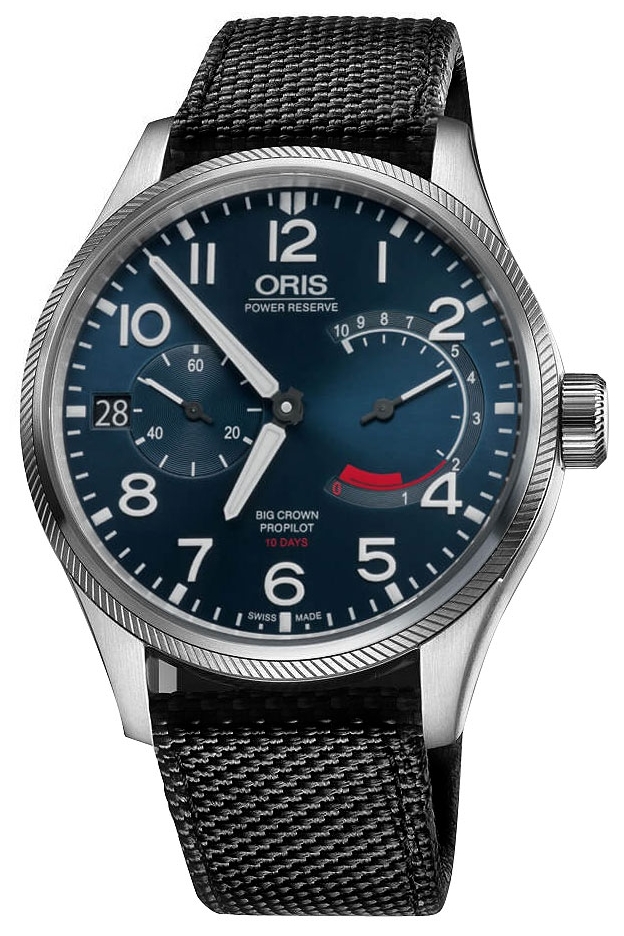
Oris Big Crown ProPilot Calibre Swiss
Adding to the already utilitarian look of the dial on this Oris Pilot’s watch is a black textile strap. The stainless steel case measures at 44 mm in diameter and features a bezel with a cord or rope-like design. Its sunray dial is in a deep navy blue. To make reading the time easier, the hour markers and hands are large and luminescent. Features on the watch include a date aperture, a power reserve sundial and a subsidiary second’s subdial. The watch also has a domed anti-reflective sapphire crystal.
Which bracelet and strap materials for watches do you prefer on our timepieces and why? Let us know in the comments below.

